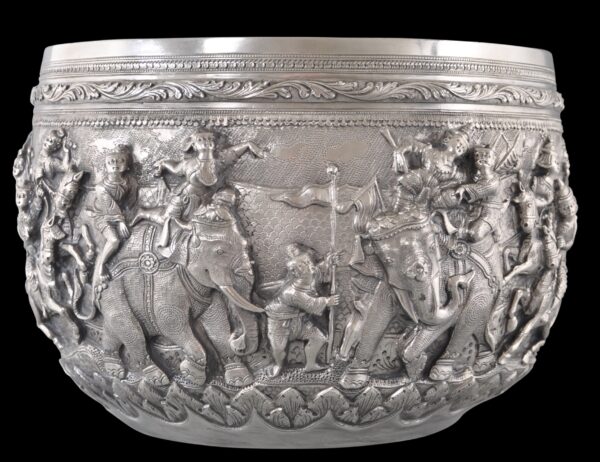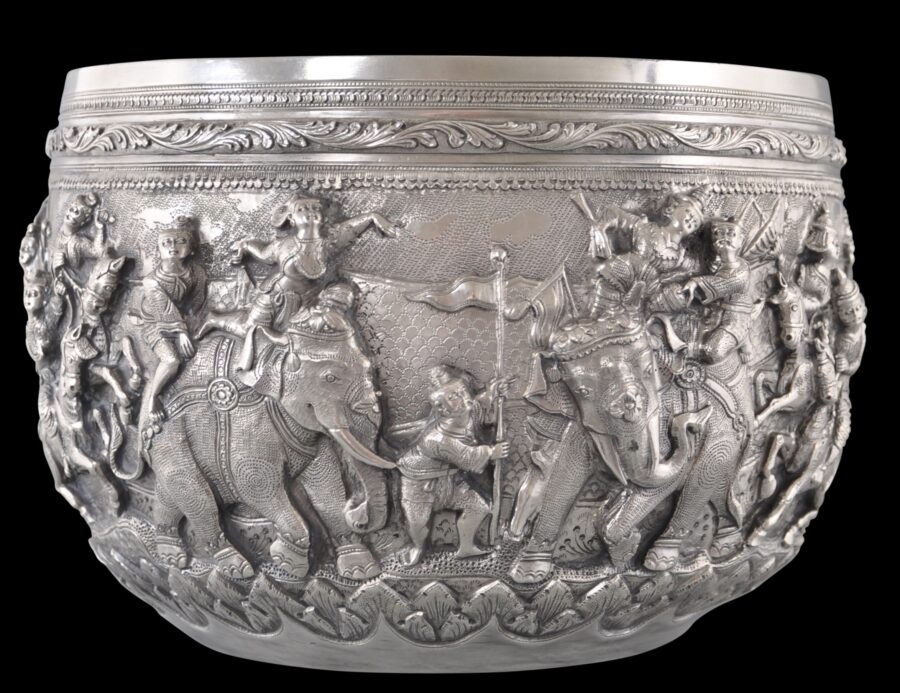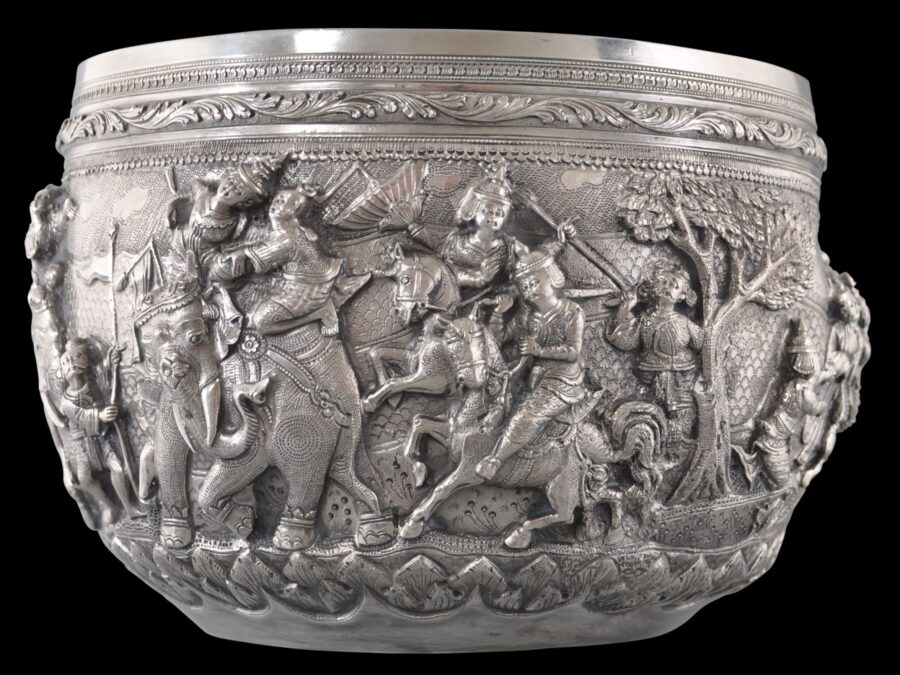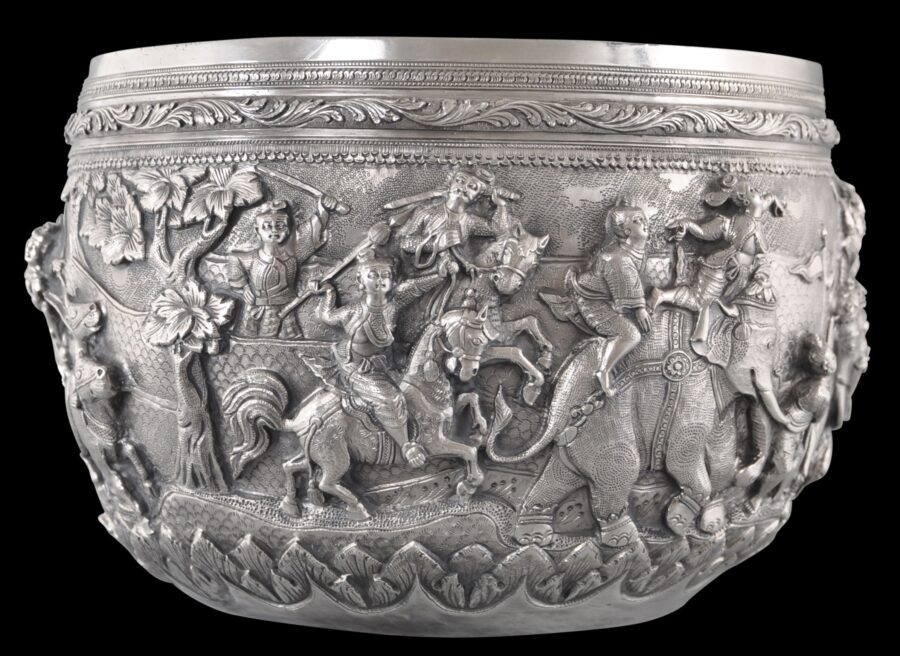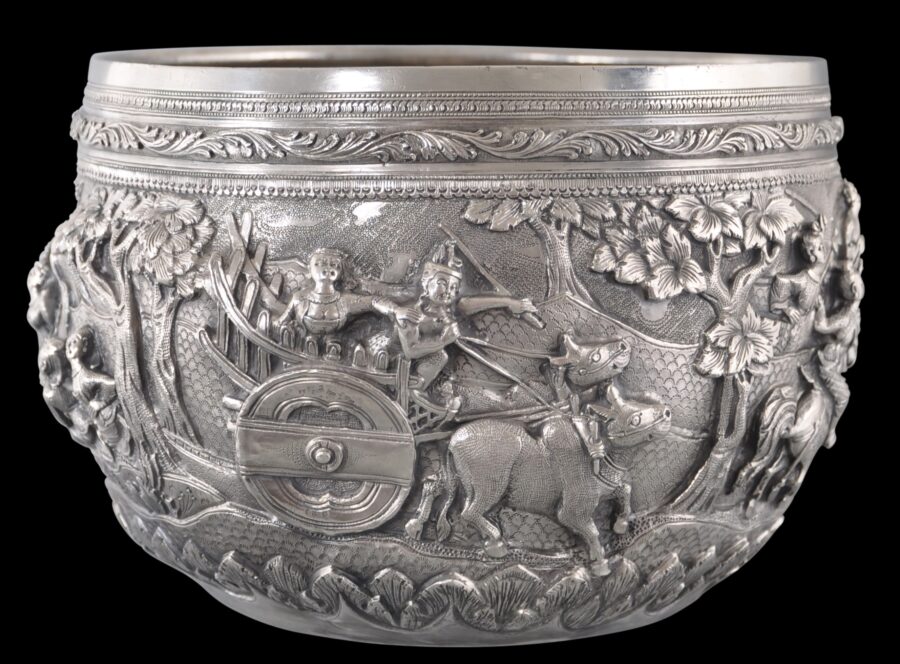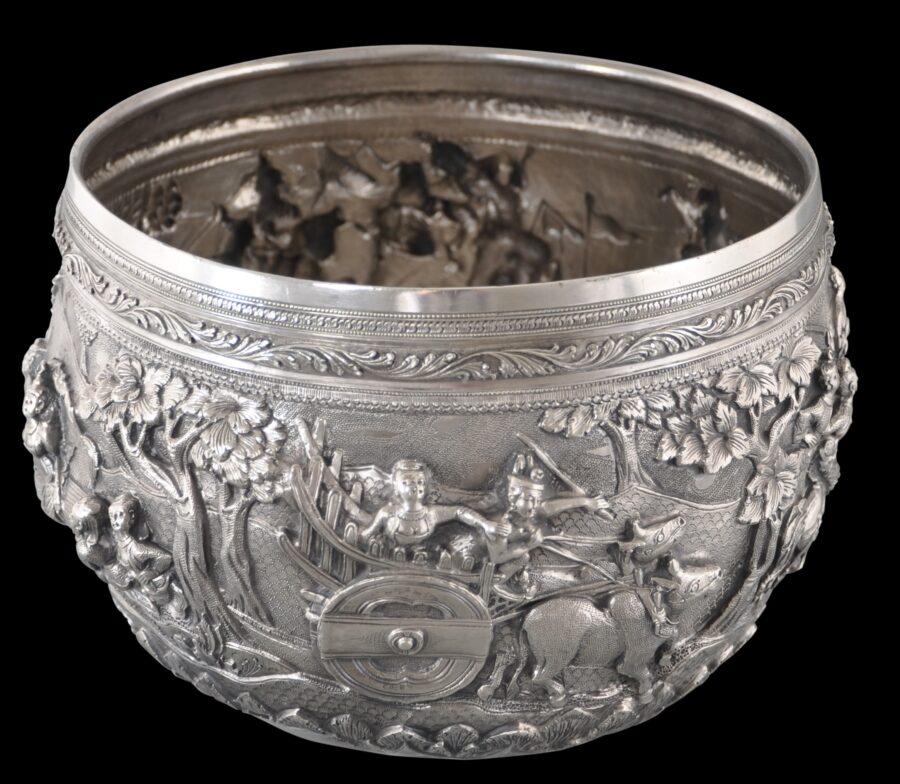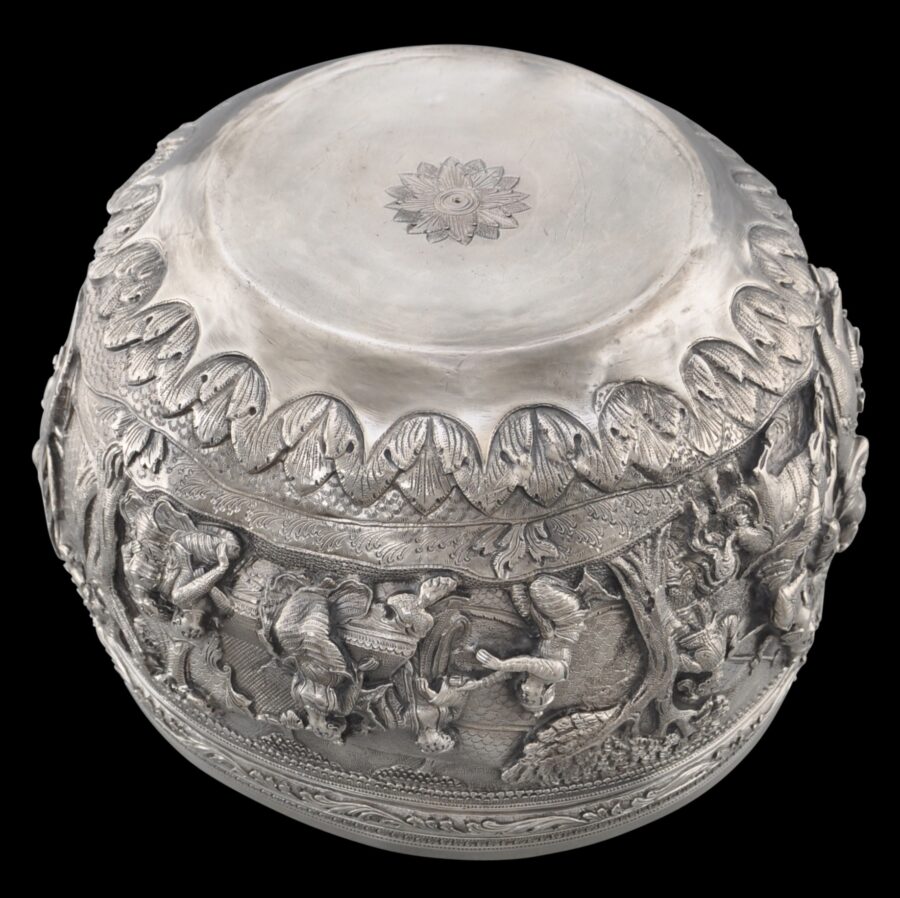The work on this superb Burmese silver bowl has a wonderful three-dimensional quality.
The repousse work shows two short scenes and one very long one. One small scene appears to show a princess or queen being beckoned to leave her sitting platform or throne. The next shows here in a traditional bullock driven wooden cart. The remainder of the bowl – almost all the way around – is taken up by a single, epic battle scene.
Princely figures on horse and elephant back are shown in battle – most likely this is a battle scene depicting King Anawrahta, the first king of all Burma (reigned 1044-77), who introduced his people to Theravada Buddhism. His capital at Pagan (Bagan) on the Irrawaddy (Ayeyarwaddy) River became a prominent city of pagodas and temples. He is often depicted in Burmese artwork on horseback.
The fluidity and dynamism of the scene is complex and masterful. Horses are shown in profile and head on. Swords are drawn, standards held aloft, a royal umbrella has been broken. And at the centre, two duelling caparisoned elephants, each with two riders, one charging ahead and the other beginning the retreat. It is a remarkable scene.
The upper border of the bowl comprises a scrolling foliage motif. The lower border is wider and is made up of a repeated, fiery, vegetal motif.
The base is decorated with a flower motif.
Bowls such as these had no ceremonial or religious use; they are purely decorative. Their shape is supposedly based on Burmese monks’ begging or alms bowls (one of the eight parikkharas or possessions allowed a monk). In turn, such bowls are based on a bowl that the Buddha himself is said to have used. But although the shape of such bowls is based on the monk’s begging bowl, ironically, Burmese monks are prohibited from touching gold or silver. Accordingly, Burmese silversmiths did not use their skills on religious objects unlike silversmiths in other Buddhist lands such as Tibet or Sri Lanka.
Overall, this bowl is a very fine work of art. Importantly, it was acquired in the UK and most probably has been in the UK since the colonial era. It is without significant dents, splits or repairs. Unlike with many extant Burmese bowls, the details of the figures are crisp and show little or no sign of having been polished down over the decades.
References
Fraser-Lu, S., Silverware of South-East Asia, Oxford University Press, 1989.
Fraser-Lu, S., Burmese Crafts: Past and Present, Oxford University Press, 1994.
Tilly, H.L., The Silverwork of Burma (with Photographs by P. Klier), The Superintendent, Government Printing, 1902.
Tilly, H.L., Modern Burmese Silverwork (with Photographs by P. Klier), The Superintendent, Government Printing, 1904.


